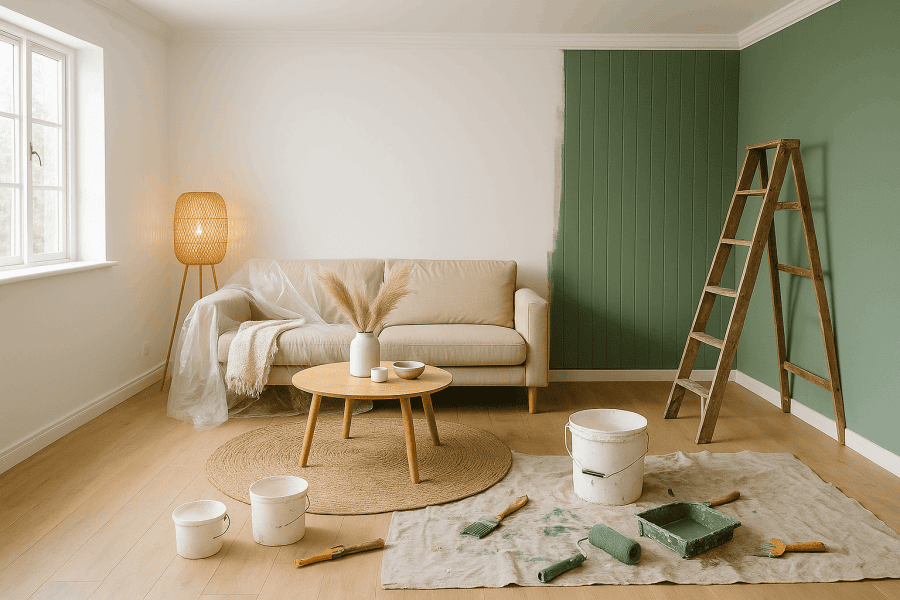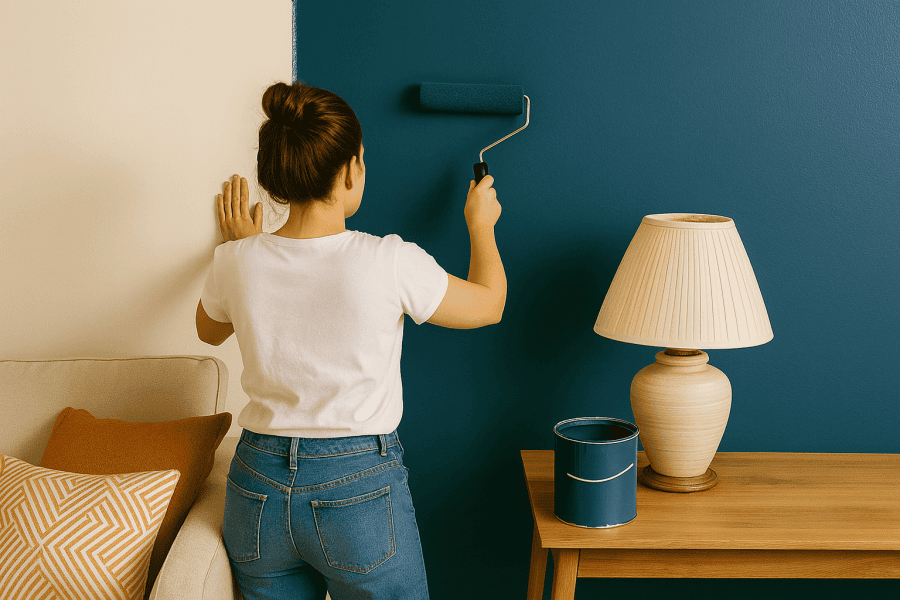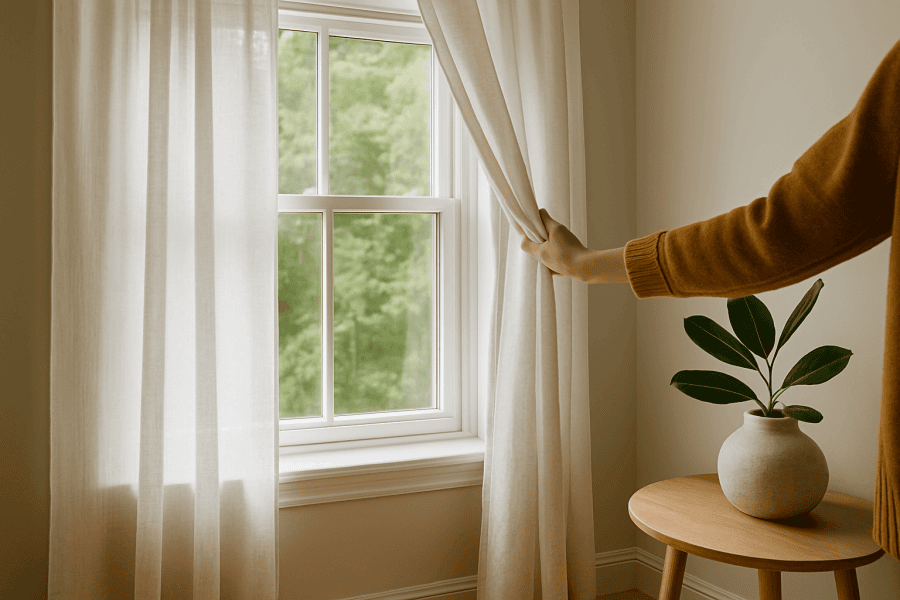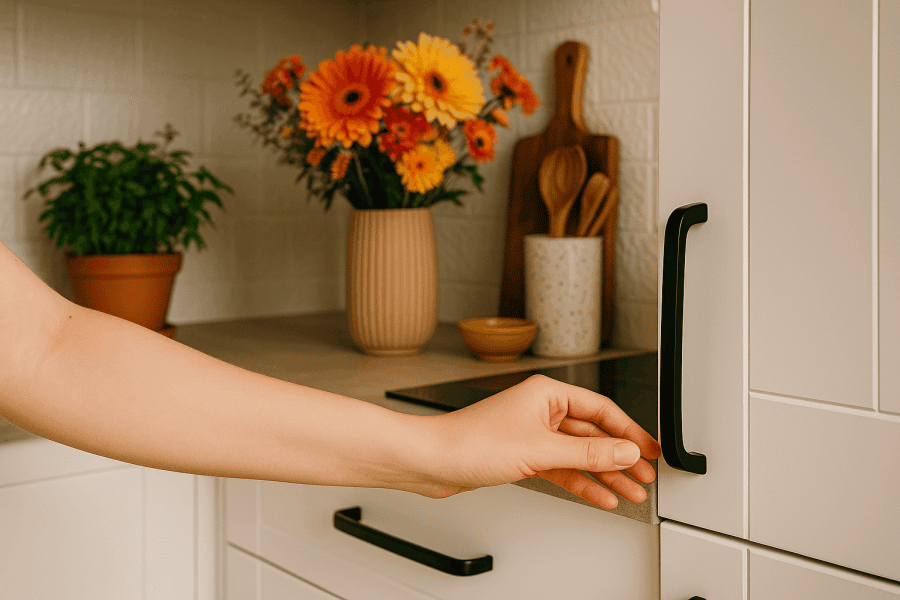
1. Upgrade Your Lighting -Without Rewiring
Still relying on that harsh ceiling light to do all the work? It’s time for an upgrade.
Swap in layered lighting: floor lamps, sconces, or even battery-powered LED strips under kitchen cabinets.
Today’s lighting options are not only renter-friendly -they’re full of personality.
A dramatic pendant over the dining table, soft wall lights in the hallway, or a dimmable reading lamp by the bed can instantly elevate the space.
Sometimes, just changing the temperature of your bulbs (warm vs. cold) can shift the entire vibe of a room.
2. Use Paint to Add Depth (Not Just Color)
Paint is powerful -but it’s not just about choosing a nice shade.
Think strategically: color-blocking behind a bed, painting doorframes in a bold tone, or going tone-on-tone with walls and trim.
Even ceilings are fair game -painting them a slightly deeper or unexpected shade can add sophistication and drama.
Designers often use dark hues in small spaces like hallways or powder rooms to create a cocoon-like, luxurious effect. It’s an inexpensive way to add a high-end feel.

3. Go Modular, Not Maximal
Oversized furniture and cluttered layouts make even large rooms feel cramped.
Instead, opt for modular, adaptable pieces: a sectional that reconfigures, nesting tables, open shelving with storage baskets.
This isn’t just a style choice -it’s a value move.
Flexible layouts feel modern, and clean lines let buyers or renters imagine their own life in the space.
Bonus? Modular furniture often works better in small apartments, helping them appear more spacious -and more expensive.
4. Frame the Light, Don’t Block It
Natural light is your secret weapon.
Take down heavy curtains, hang rods wider and higher than your windows, and opt for sheer fabrics or linen blends.
Mirrors placed opposite windows can bounce light deeper into a room, making it feel larger and more open.
Clean windows and tidy windowsills go a long way. The more open and bright a space feels, the more valuable it seems -no renovation required.

5. Add Texture to Create Visual Luxury
You don’t need marble floors or velvet walls to add richness.
Instead, bring in tactile contrast: a boucle chair, a ceramic lamp, woven rugs layered on hardwood, brushed brass handles in the kitchen.
Texture tells the eye that care was taken -that this isn’t just another basic apartment.
And it makes a huge difference in how people feel in the space.
6. Swap Out Hardware for an Instant Refresh
If your cabinets still have builder-grade knobs or your faucets scream “early 2000s,” this one’s for you.
Modern hardware -in matte black, brushed gold, or even stone -is affordable, easy to install, and instantly noticeable.
The same goes for switch plates and outlet covers. Swapping plastic for metal or neutral-tone covers brings polish, especially in kitchens and bathrooms where buyers tend to look closely.

7. Hide the Tech. Highlight the Layout.
Messy wires, visible routers, and piles of remotes distract from even the most beautiful decor.
Hide cables using wall channels or baskets. Tuck routers inside hollow books or decorative boxes. Mount the TV on the wall to free up floor space.
A clean visual line makes your layout shine.
And buyers notice when a space feels seamless and intentional -even if they can’t put their finger on why.

Let’s Talk Details: Smart Q&A Before You Start
Q: What’s the cheapest way to make a home look more expensive?
A: Lighting and hardware swaps are the biggest bang-for-your-buck moves. They cost very little but change the whole atmosphere.
Q: Do neutral colors increase property value more than bold ones?
A: Neutrals work best in larger areas, but bold tones can create a luxury effect in small spaces like bathrooms or entryways -if done thoughtfully.
Q: What furniture makes a home feel more valuable?
A: Modular, low-profile furniture with hidden storage tends to make spaces feel bigger, more modern, and more desirable.
Q: Can I improve natural light without major renovations?
A: Absolutely. Using mirrors, light fabrics, and strategic curtain placement can make a room feel twice as bright -no construction needed.
Q: Do small upgrades really help with resale?
A: Yes. Buyers often focus on “first impression” elements like lighting, layout, and overall vibe. Small, smart design decisions can add perceived (and actual) value.
What It All Adds Up To
Interior design isn’t just about taste -it’s about strategy.
These small hacks might not feel dramatic, but they add polish, comfort, and value in all the ways that matter.
And whether you’re putting your home on the market or just want to enjoy it more -it’s worth the little extra effort.
